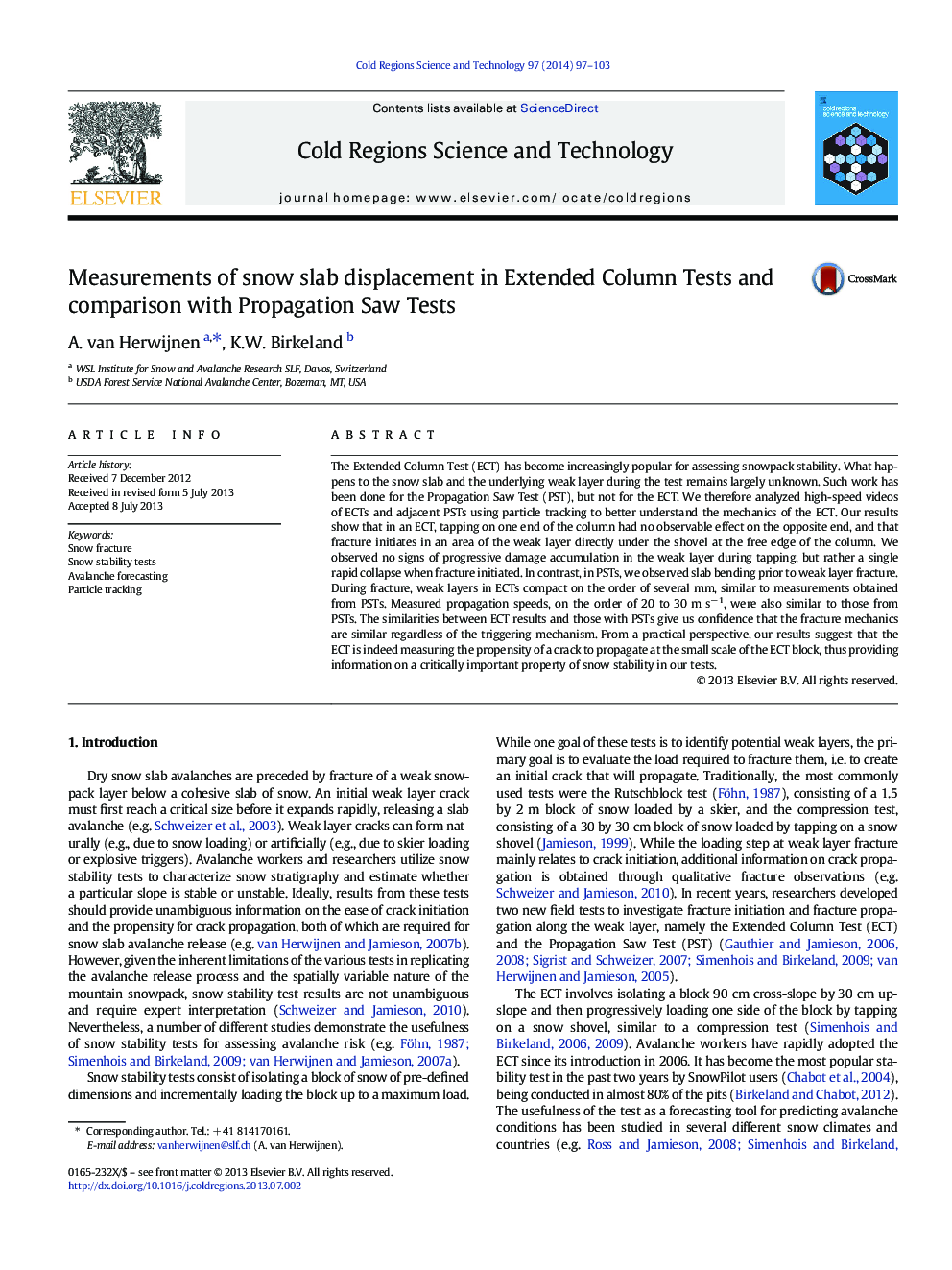| Article ID | Journal | Published Year | Pages | File Type |
|---|---|---|---|---|
| 6426956 | Cold Regions Science and Technology | 2014 | 7 Pages |
â¢We measured snow displacement in ECTs and adjacent PSTs.â¢Tapping on the column does not affect the far side of the ECT.â¢No progressive weak layer damage observed in ECTsâ¢Weak layer fracture very similar in ECTs and PSTsâ¢Improved understanding of mechanics of the ECT
The Extended Column Test (ECT) has become increasingly popular for assessing snowpack stability. What happens to the snow slab and the underlying weak layer during the test remains largely unknown. Such work has been done for the Propagation Saw Test (PST), but not for the ECT. We therefore analyzed high-speed videos of ECTs and adjacent PSTs using particle tracking to better understand the mechanics of the ECT. Our results show that in an ECT, tapping on one end of the column had no observable effect on the opposite end, and that fracture initiates in an area of the weak layer directly under the shovel at the free edge of the column. We observed no signs of progressive damage accumulation in the weak layer during tapping, but rather a single rapid collapse when fracture initiated. In contrast, in PSTs, we observed slab bending prior to weak layer fracture. During fracture, weak layers in ECTs compact on the order of several mm, similar to measurements obtained from PSTs. Measured propagation speeds, on the order of 20 to 30 m sâ 1, were also similar to those from PSTs. The similarities between ECT results and those with PSTs give us confidence that the fracture mechanics are similar regardless of the triggering mechanism. From a practical perspective, our results suggest that the ECT is indeed measuring the propensity of a crack to propagate at the small scale of the ECT block, thus providing information on a critically important property of snow stability in our tests.
